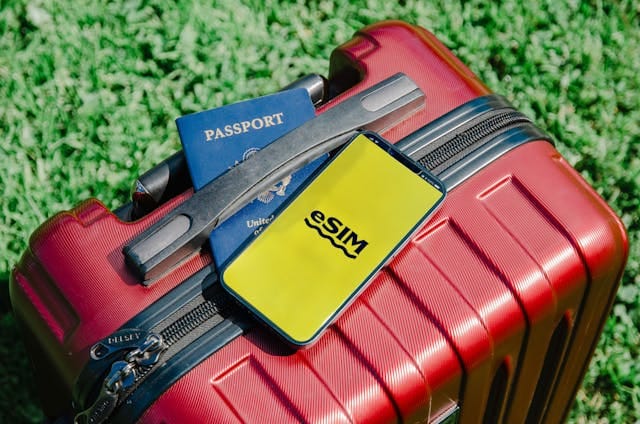Upgrading to a new iPhone is a thrilling experience. You get the latest features, a new design, and enhanced performance—but there’s one crucial step that many people tend to overlook: transferring eSIM to new iPhone. The eSIM technology has revolutionized how we manage mobile connections, making it possible to switch carriers, phone numbers, and even international plans without the need for a physical SIM card.
For those making the switch from an older iPhone model to a newer one, the process of transferring eSIM to new iPhone can be somewhat confusing. While setting up the new device itself is straightforward, transferring your eSIM to the new phone can be a bit more involved, as it requires some specific steps to ensure that your mobile network and phone number come with you to the new device.
But the good news is that transferring eSIM to new iPhone is far simpler than it seems, especially if you follow the correct procedures. Whether you are upgrading to the iPhone 14, iPhone 12, iPhone SE, or any of the other models that support eSIM, the process is generally the same. No need to visit a carrier store or deal with a physical SIM card—everything can be done directly from the phone.
This guide will walk you through the steps for transferring eSIM to new iPhone, providing tips, troubleshooting advice, and potential pitfalls to avoid. By the end of this guide, you’ll have all the information you need to complete the process with ease, ensuring a smooth transition to your new iPhone while keeping your mobile service intact.
Let’s begin by exploring the basics of eSIM and why it’s so important for your new iPhone.
What is eSIM and Why Is It Important for Your New iPhone?
When you’re transferring eSIM to new iPhone, it’s helpful to understand what eSIM is and why it’s such a significant part of modern mobile connectivity. eSIM (embedded SIM) is a digital SIM card built into your phone. It allows you to activate a cellular plan without needing a physical SIM card, which means you don’t have to rely on plastic SIM cards that need to be inserted or swapped out.
eSIM has become the standard in many of the newer iPhone models, including the iPhone 12, iPhone 13, iPhone 14, and even the iPhone SE. The technology offers many benefits, such as:
Flexibility: With eSIM, you can switch between mobile carriers and even manage multiple phone numbers or plans on a single device. It’s a great feature for travelers who need a local number in different countries.
Convenience: eSIM eliminates the need for a physical SIM card, meaning you can easily activate, deactivate, and change plans directly from your phone settings.
Space-Saving: With no physical SIM card tray required, eSIM allows manufacturers to save space within the phone, leading to better battery efficiency and the potential for new features.
Whether you’re upgrading from an older iPhone model, like the iPhone 8, or upgrading to the iPhone 14, transferring eSIM to new iPhone ensures that you continue to enjoy these benefits. It’s essential to ensure that you transfer your eSIM profile properly, as it holds your carrier information and can affect your ability to make calls, send messages, or use data.
Step 1: Verify Carrier Support for eSIM on Your New iPhone
Before you start transferring eSIM to new iPhone, the first thing you need to do is verify whether your carrier supports eSIM on the new iPhone. While most major carriers like AT&T, Verizon, and T-Mobile support eSIM, it’s always a good idea to confirm that your specific model and carrier are compatible.
How to Verify Carrier Support for eSIM:
Check the Carrier’s Website: Most carriers list supported devices and provide detailed guides on how to activate eSIM. Be sure to check for your specific iPhone model, such as iPhone 14 or iPhone SE.
Ask Customer Support: If you’re not sure, contacting your carrier’s customer service is a great way to confirm compatibility. They can confirm whether your iPhone model supports eSIM and if your existing mobile number can be transferred.
Use the Apple Website: Apple’s official website also provides a list of carrier partners that support eSIM. You can find this information by searching for your specific carrier and device.
By verifying this upfront, you’ll save yourself from any unpleasant surprises during the process of transferring eSIM to new iPhone.
Step 2: Prepare Your Old iPhone for eSIM Transfer
Now that you’ve confirmed your carrier supports eSIM and your new iPhone, it’s time to prepare your old iPhone for transferring eSIM to new iPhone. The first step is to back up your old phone to ensure that all your contacts, apps, photos, and settings are saved.
How to Prepare Your Old iPhone:
Backup Your Data: You can back up your old iPhone using iCloud or iTunes. This ensures that when you set up your new iPhone, you can restore everything from your old device seamlessly.
Deactivate eSIM on the Old Device:
- Go to Settings > Cellular.
- Select your eSIM plan.
- Tap Remove Cellular Plan. This will free up your eSIM profile and make it available for transfer to the new device.
Sign Out of Apple ID: It’s a good idea to sign out of your Apple ID on the old iPhone. Go to Settings > [Your Name] > Sign Out. This helps to prevent any issues with iCloud syncing and ensures your account is properly deactivated on the old device.
Power Off Your Old iPhone: Once the eSIM is removed and your Apple ID is signed out, power off your old iPhone. This step ensures that there’s no interference while transferring the eSIM to your new iPhone.
Step 3: Set Up Your New iPhone
With your old iPhone prepared, it’s time to set up your new iPhone. This process is relatively straightforward, but you should follow these steps carefully to ensure everything is transferred correctly.
How to Set Up Your New iPhone:
Power On the New iPhone: Begin by turning on your new iPhone. Follow the on-screen instructions to select your language, region, and connect to Wi-Fi.
Restore from Backup: During the setup process, you’ll have the option to restore from an iCloud or iTunes backup. Choose the appropriate backup (from your old iPhone) to transfer your data and settings to the new device.
Sign in with Apple ID: When prompted, sign in with your Apple ID to sync your apps, contacts, and other important information.
Activate iPhone: Once your data is restored, proceed with activating your new iPhone by following the on-screen instructions.
Step 4: Activate eSIM on Your New iPhone
With your new iPhone set up, the next step is to activate your eSIM. Here’s how to do that:
Activating eSIM on iPhone:
Open Settings: Go to Settings > Cellular > Add Cellular Plan.
Scan QR Code or Use Carrier App: If your carrier provides a QR code for eSIM activation, simply scan the code with your iPhone camera. Alternatively, some carriers have apps that allow you to activate eSIM directly on your iPhone.
Manually Enter eSIM Information: If you don’t have a QR code or carrier app, you may need to enter the eSIM details manually. Follow the on-screen prompts to input the necessary information provided by your carrier.
Confirm Activation: Once the eSIM is activated, you should see your carrier’s name and the option to turn on cellular data. Test the activation by making a call or using mobile data.
Step 5: Troubleshooting Common Issues with eSIM Activation
While the process of transferring eSIM to new iPhone is generally smooth, you may encounter a few common issues. Here are some solutions to common problems:
No Service or Signal: If you don’t see any signal after activating your eSIM, try restarting your iPhone and turning off and on the cellular settings.
eSIM Activation Failed: Double-check that you’ve entered the correct eSIM details. If the issue persists, contact your carrier for assistance.
QR Code Not Working: Make sure you’re scanning the correct QR code and that there’s no obstruction in the camera lens.
Conclusion
Transferring eSIM to new iPhone is a relatively straightforward process, but it does require some careful preparation. By verifying that your carrier supports eSIM, backing up your data, and following the necessary steps for activating eSIM on your new iPhone, you can ensure a smooth transition.
Once you’ve activated your eSIM on the new device, it’s important to confirm that everything is working properly—test your calls, messages, and mobile data. If you encounter any issues, don’t hesitate to reach out to your carrier’s customer service for assistance.
As eSIM technology becomes increasingly popular, transferring eSIM to new iPhone is something that more and more users will need to navigate. Whether you’re upgrading to the latest iPhone models like the iPhone 14, iPhone 13, or even an iPhone 8, this guide should have given you the tools and knowledge to make the process easy and hassle-free.
Embrace the convenience of eSIM and enjoy your new iPhone with the peace of mind that your mobile connectivity will remain intact throughout your upgrade.






